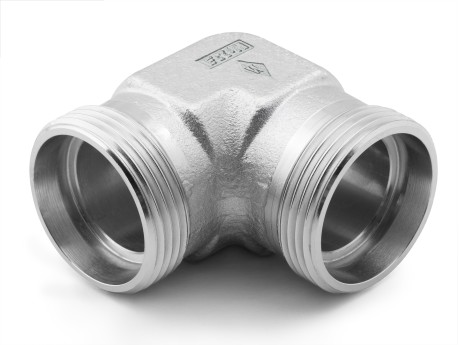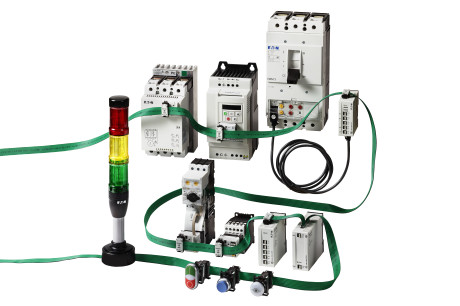It’s one of the plus of Eaton and key points on the agenda of Richard Jacobs, who recently assumed the position of President of the Europe, Middle East and Africa for the hydraulic unit of American society.

Nigeria, Kenya and Tanzania. But even Dubai and Saudi Arabia. For Richard Jacobs, the new elected President of the Hydraulics Eaton Business for the EMEA region, there are many business opportunities in these areas of the world. We met and interviewed him to find out what are the key issues on his agenda in the medium and long term.
Taking this new role is an ambitious goal. What medium-to-long-term strategy will you adopt in order to combine the need for a global vision with the ability to respond to different needs at the local level?
Plans are already in action for the sales team to touch base with all of our customers and channel partners for feedback on the current state of play. At the same time, I’ve been travelling extensively; meeting both customers and employees across the EMEA region hear what they have to say. From these meetings, all of the ideas and suggestions will be collated and analysed for correlation – factors that can help accelerate growth and, more importantly, improve customer service are key goals for our medium-to-long term strategy. New programs are already in development to further enhance our customer focus, response times and service levels; being more customer focussed and paying close attention to the details, will certainly add value to our end users. We will also continue our long-term strategy to localise production of key products – the newly opened X20 pumps manufacturing, assembly and test line in Havant, UK is a recent example. Localisation of production enables us to ensure our delivery leadtimes are better than the industry standard and will ultimately allow additional flexibility within our product portfolio. This ongoing localisation program will also include a GG motors assembly and test line at the Havant facility.

How do different regions of the world contribute to the formation of Eaton’s turnover and how is this composition evolving?
We have seen a lot of growth within the EMEA region and significant growth in the Asia Pacific region. There are certainly excellent short- and long-term opportunities across both markets. One of the great things about being part of Eaton is that it’s a global company and we have great abilities to serve our global customers, who want to be served globally as well as at a local level. Regardless of region or country, we offer the exact same products, with the exact same quality and, of course, with the exact same high level of service anywhere in the world. Additionally, because we are global company who acts locally, we also provide our customers with local service and local products that meet the needs for their specific markets. If, for instance, a company is based in Asia or Africa and would like to move to Europe and is a customer of ours, they can easily do so with our help. Our in-depth knowledge and broad expertise across our portfolio, which not only covers hydraulics, but also electrical, filtration as well as other products and services, allows us to provide customers with complete solutions.

Which are the countries and applications where you expect the greatest growth potential for fluid power solutions?
There are certainly many regions where Eaton can grow and expand. I personally have been looking at Africa as the next emerging region – with Nigeria, Kenya, Tanzania, Morocco and South Africa being the areas where we see tremendous growth potential. I would also mention the Middle East, particularly in Dubai, where all the construction, new developments and further visions are in place; here you can certainly feel the growth momentum strengthening. Saudi Arabia is witnessing the same growth momentum; the Sadara project in Jubail Industrial City, where a fully-integrated chemical manufacturing complex is being constructed, is providing a lot of opportunities for Eaton. In terms of other markets, wherever there’s significant investment in building or modernisation of infrastructure, there is a clear focus on harnessing natural resources (i.e. oil & gas, marine and mining). As the population moves from farmlands to cities for the broader job opportunities, there are increasing pressures on maintaining food supply; here we’re working with system integrators to develop more efficient agricultural and food processing equipment. At the same time, the provision of suitable housing will also become crucial; Eaton supports the construction industry (i.e. cement, steel, and process).
Energy efficiency and safety are the drivers who have led the development of new solutions. What answer is Eaton providing both in terms of products and investment when it comes to researching new innovative solutions?
As a global company, we are committed to sustainability, safety and energy efficiency. We strongly believe in sustainability and we also have a sustainability reporting system in place in all our factories around the world. We also run safety programmes to ensure that we create a safe working environment for all our employees. In addition, we are committed to increasing energy efficiency factors, by manufacturing our products and delivering services using the least amount of energy required. We also help our customers to enhance efficiency and safety through our innovative products. One fine example of this is our LifeSense hose. This state-of-the-art hydraulic product has been designed to ensure the user’s safety, providing the user with an immediate emergency signal in case of hose failure. We also develop products that improve energy efficiency. For example, our Walterscheid product line features zero leak components and our Guardian Seal product line is the next step in high-level rust protection. Not only does our technology translate into improved efficiency, but also sustainability and safety by replacing less environmentally-friendly materials, such as chrome, zinc and nickel, with organic type technology. Our HP30 motor is another fine example of our commitment to promoting sustainability while enhancing efficiency; featuring exceptional starting torque efficiency and two-speed capability, the HP30 offers significant advantages over radial piston and cam lobe designs. Also, by minimising no load pressure drop in high speed mode, the motor reduces parasitic heat build-up, thereby improving vehicle operating efficiency and reducing emissions.

The integration between different technologies, such as mechanics, hydraulics and electronics is another major challenge. How is Eaton addressing the demand for hybrid solutions?
In my opinion, integrating different technologies is the way forward and we have already initiated several projects that point in this direction. Eaton’s unique strength is its ability to offer not just the hydraulics solution, but also highly innovative hybrid solutions that integrate hydraulics with our electrical technologies and other mechanical elements. A testament to this is our SmartWire technology – by reducing the amount of cabling, SmartWire can contribute to significant cost advantages in a wide range of electro-mechanical applications.



